The latest Hitman trilogy wrapped up back in 2021, but Agent 47’s work is far from over. Hitman: World of Assassination is the trilogy’s final form, bundling together almost all of the content from all three games into one package. Now that we have the whole picture, is it worth getting our hands dirty once more?
I imagine the first question people will ask, given Hitman’s somewhat confusing DLC approach, is: what does The World of Assassination package actually include? You get all the maps and missions of the main story, the DLC for 3 excluding cosmetics and items, the bonus maps from Hitman 1, a VR mode, the first sniper mode map, and a new rogue-like mode called Freelancer. What this doesn’t include are the aforementioned items, cosmetics, sniper mode maps, and the two DLC maps from 2. Needless to say, this is incredibly confusing. From the name, I had assumed this would be an all-in-one package, and it mostly is, but the exclusions aside from those mostly cosmetic items feel weird, especially when 3’s DLC is included.
The content itself is excellent, however, with a large variety of locations and missions. It’s neat to go back to Hitman 1 and 2 locations with the added graphical power of 3. In fact, with ray tracing on and most settings at high to medium, the game’s first area, Paris, is actually one of the most difficult to run now. I usually get 50 to 60 fps, but in Paris, my rig hovers around the 40s. It’s still playable, and I get the frames back if I turn down the settings a tad, but the added reflections and lighting improvements are worth it in my opinion.
The game has also added Elusive Targets, assassinations where you only get one shot with no saves, back into the game in a rotation. It’s nice to have these back in the Arcade mode, but they come with further complications that make them more annoying than fun this time around. For example, you may be asked to assassinate the target with a melee weapon or only use one disguise. Thankfully, these are completely optional now, which rebalances the difficulty to walk that tightrope between frustrating and fun. I do wish I could just practice these with saves enabled for fun, waiting 12 hours between attempts is still weird for a single-player game, but simply having them back in the game is good.
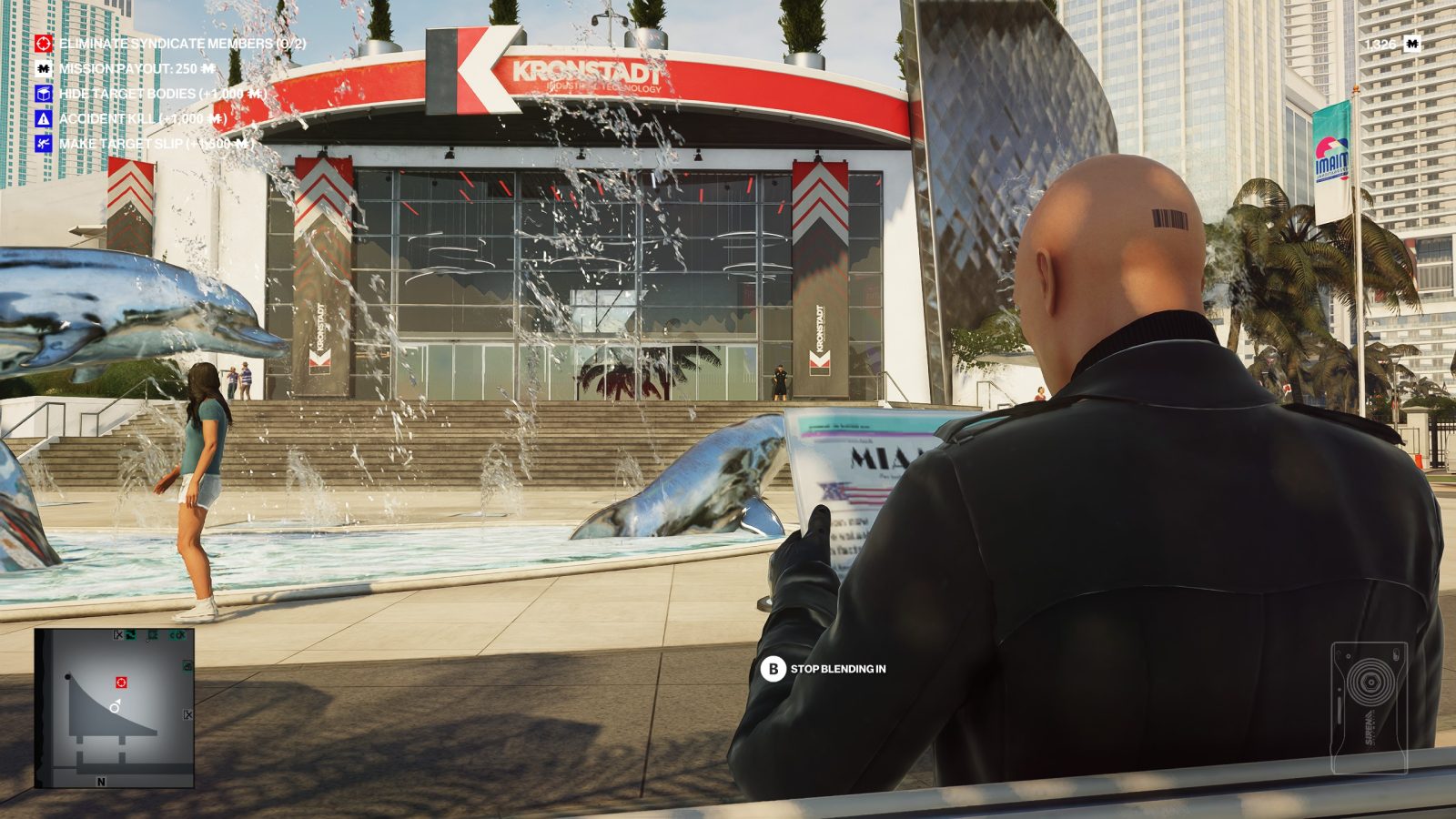
This bundle was my first experience with Hitman’s VR mode, which is less than ideal for a few reasons. For one, using an Oculus Quest 2 connected to my PC via a 10Gps USB C cable offered a very janky and stuttery experience, with framerate dips and my hands jerking around. Second, the controls themselves just aren’t accurate enough, especially when throwing or sniping. Picking things up or knocking out guards from behind is simple enough, with a good amount of wiggle room for your gestures, but the throwing motion required of you is way too specific. I tried about 15 different ways to throw a brick at a guard’s head in the tutorial, and the gesture that finally worked felt more like a light shove than what was happening in my headset. Sniping is much worse, possibly due to my non-optimal setup, with my controller jerking around and taking me out of the scope view constantly. It’s more than likely you may have a better experience with a different setup, but I found it to be unplayable.
We’ve covered all the other game modes and features in previous reviews, so let’s move on to this package’s highlight: Freelancer. Freelancer is a rogue-like mode where you need to complete a campaign of four contracts, each with several assassinations within, in a row without dying, saving, or letting the target escape. To be perfectly honest, I’m not very good at Hitman, but I still really like this mode. In lieu of the usual menu, 47 now has a home base where he stores all his gear, all of which you need to procure on-site and bring back after completing the mission. Weapons such as guns and knives persist across campaigns if stored in the hideout, while more situational items like poisons, rubber ducks, crowbars, and wrenches are lost if you fail the campaign.
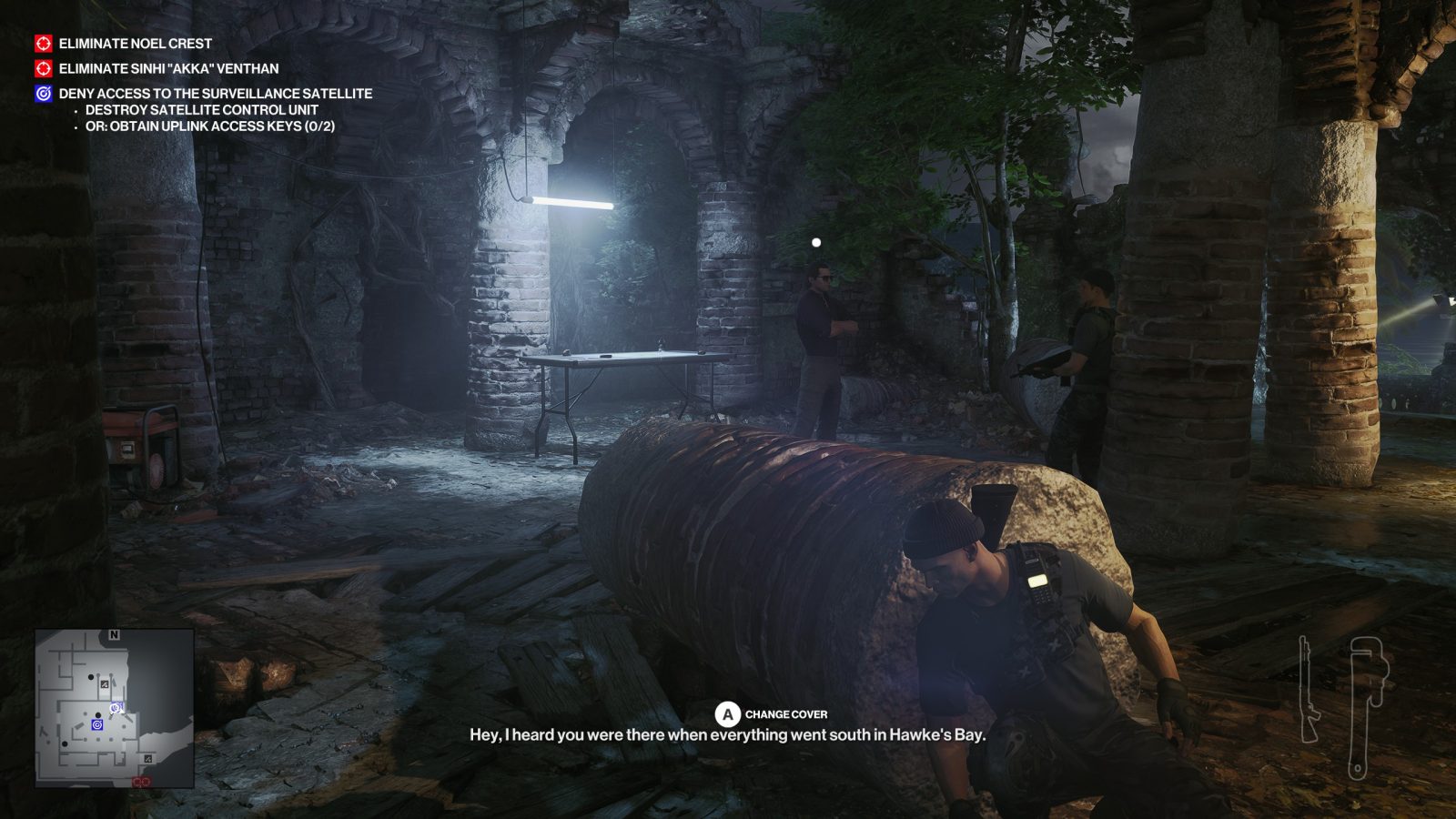
As you complete contracts and campaigns, your mastery of the mode will level up granting you access to more of the hideout with more things to do inside. For example, you can unlock a shooting range to practice, an office, and even appropriately grim motivational posters to hang in the hallways. Some posters are unfortunately locked behind further DLC packs, which only serves to remind me of the confusing release model here. Regardless, I really like having a base of operations. It’s not as quick or efficient as a menu, but actually planning what to bring (your loadout is restricted by a points system) gives a nice physicality to the setup phase. I wouldn’t mind having the option to do this in the main campaign, though I’d still want the menu for convenience.
Once you’ve selected a contract, you’ll choose one of the multiple locations (you can go to maps you don’t own too) where your targets can be found. A location can have one or more targets to assassinate, for example, you may need to take out a gardener in Italy who’s part of a criminal syndicate as well as a well-dressed woman making a business deal. While each mission has a base payout, you can get even more cash to spend on new tools of the trade by completing optional objectives like making the kill look like an accident or not being caught on security cameras. These seem to be similar to the arcade mode optional objectives, but the randomness of this mode makes them more feasible I feel.
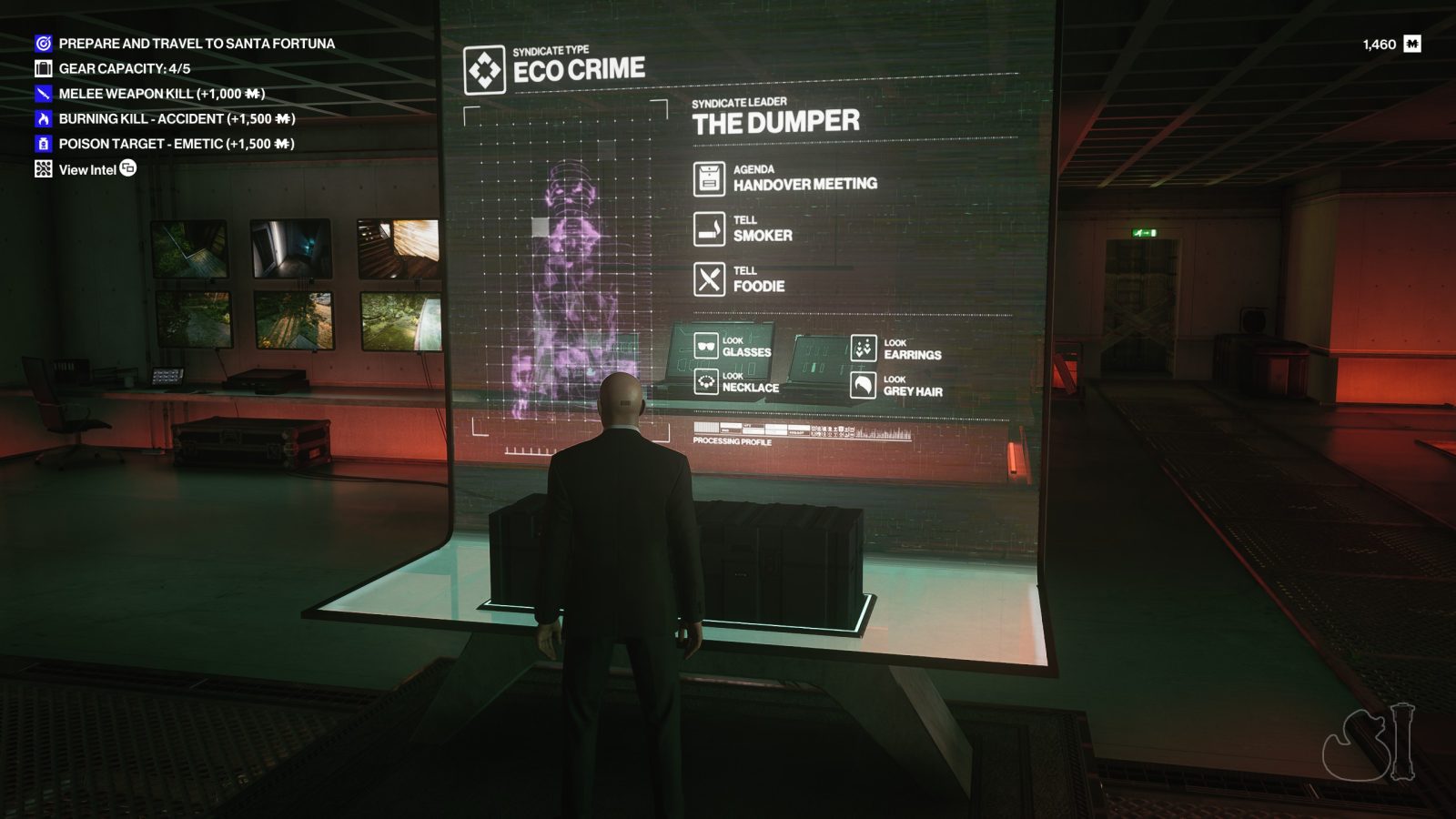
The randomness of the assassinations themselves can be a lot of fun to puzzle out. For one objective, I needed to eliminate a guard who was constantly walking around in a group of three. I spent about half an hour watching him for an opening and found none. So eventually, when the group was less exposed, I just went ahead and shot him in the head and ran away. The absurd hilarity of Hitman is on full display here, with fewer options comes more creative assassinations and more uses for items like the exploding phones and rubber ducks.
Once you’ve killed your target and returned to base, you’ll be rewarded with your choice of one of three items, all randomly chosen from a huge pool. When you only have one location in your contract remaining, that mission will turn into something of a Where’s Waldo. Your target is the head of that particular syndicate, identifiable from a set of clues like clothing, hair color or style, and habits such as being a foodie or very thirsty. It’s usually not too hard to pick out your true target from your selection of purple-highlighted suspects, but if you’re having trouble you can always just kill all of them. However, if the group is alerted to your presence, the leader will try to escape. If they do so, the campaign will fail, but intentionally triggering the escape may make picking out the leader a lot easier.
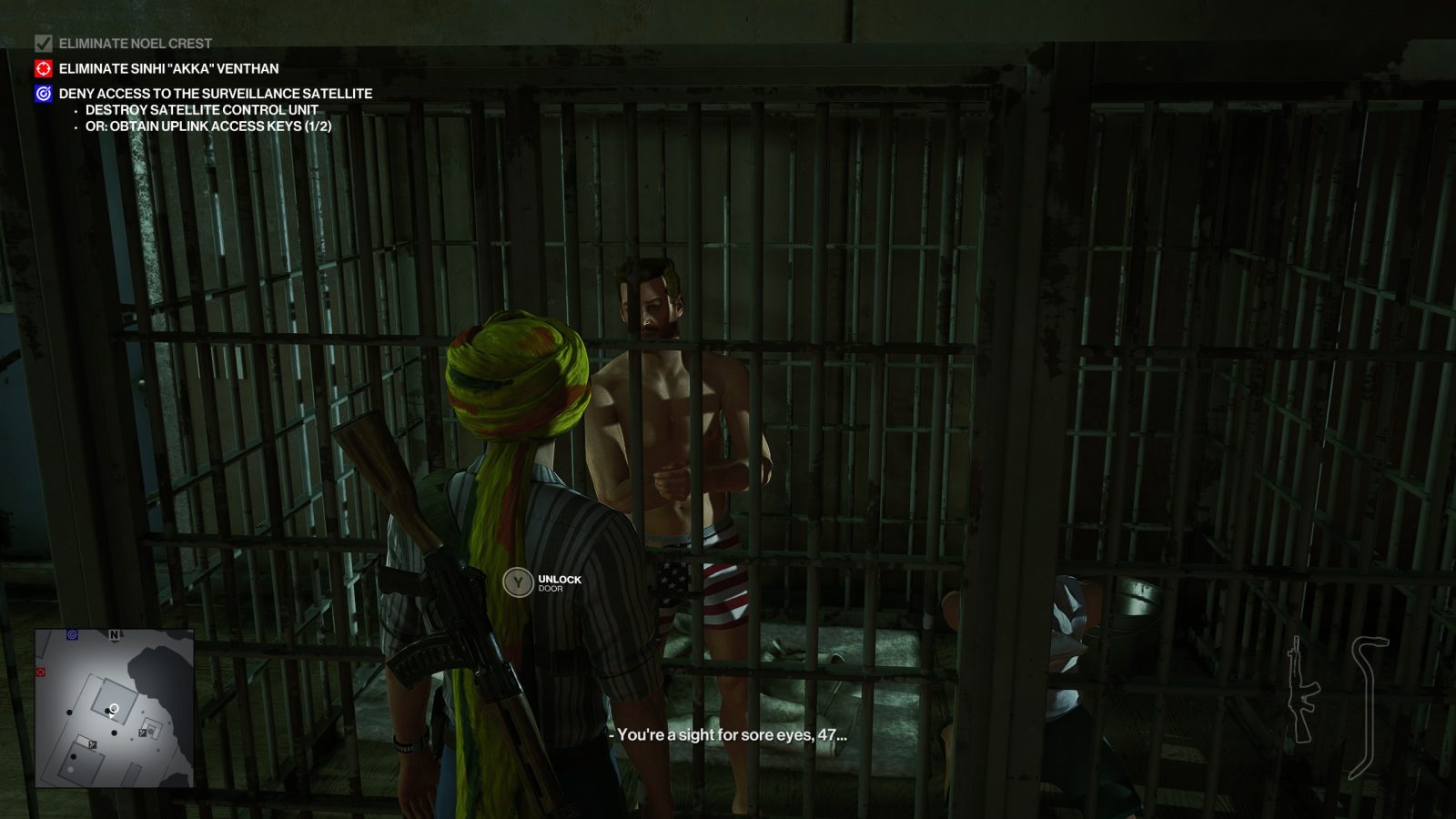
Finishing a full contract will gain you an even better, random reward. You then choose another contract to tackle, with the cycle repeating four times for a full campaign in increasing difficulty. So far, I’ve only managed to reach the second set of contracts, but the mode is a ton of fun and I’ll definitely keep chipping away at it.
The mode is well suited to the portability of the Steam Deck, with each contract taking half an hour give or take. The game isn’t quite optimized for the deck, however, with in-game text being almost illegible outside of subtitles and some menus. Still, if you’re familiar enough with the game, that’s not too big of an issue, though I hope they can improve the experience in that regard. I play on deck with low to medium settings at 40 fps (using the deck’s 40 hz mode). On the more intense maps, this gives me about an hour and forty minutes of battery life, and I’m sure you can squeeze even more out with further lowered settings and fps.
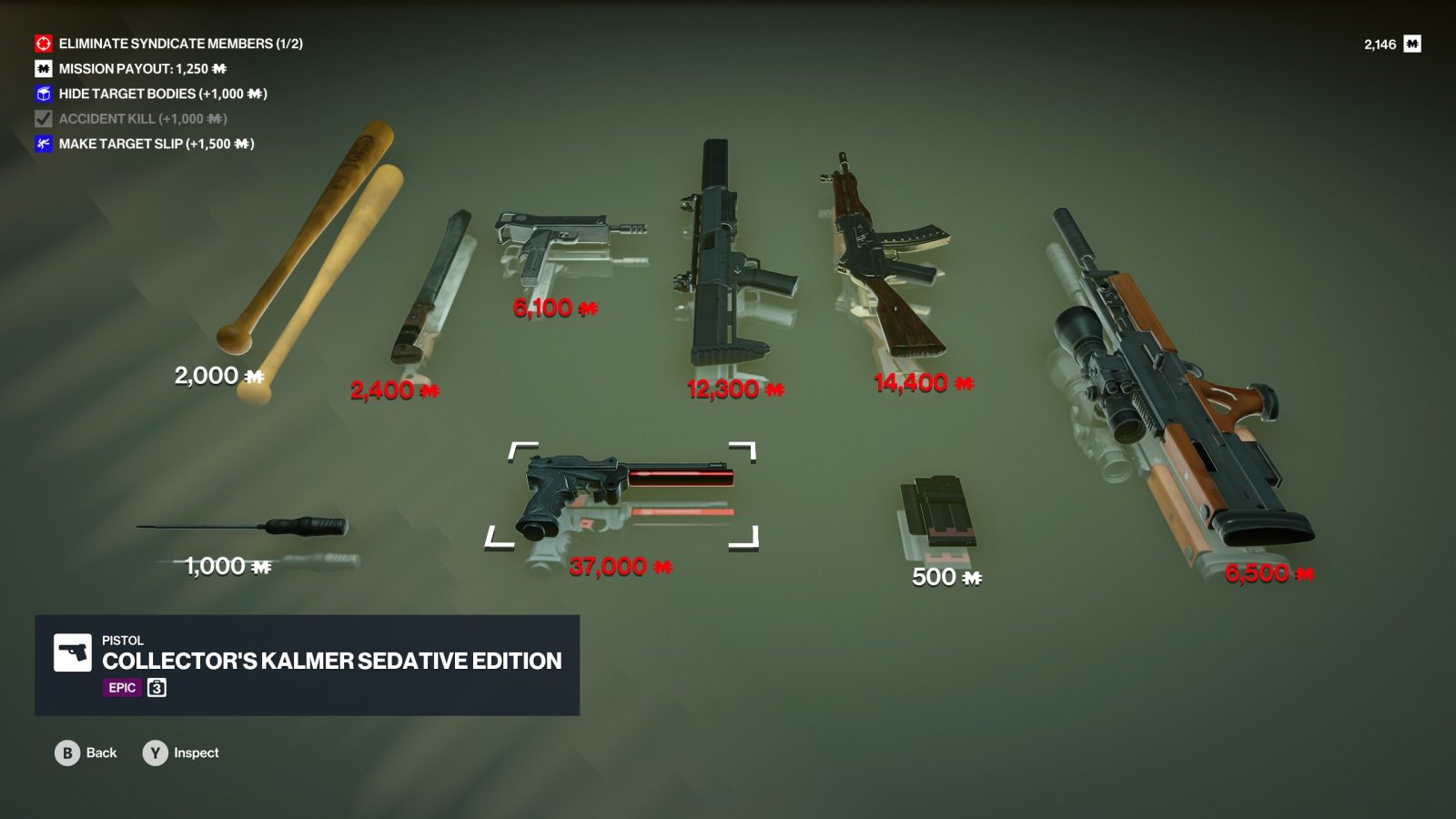
Playing portably does come with a few oddities and annoyances, however. Hitman is unfortunately still an always online experience, and going into sleep mode or disconnecting will require you to either reconnect to the server or continue playing with an offline profile; losing access to certain features and unlockables. For a single-player game, this is just stupid. It’s not like I need the server to play anything but the Elusive and Custom Contracts, so other modes should be free of these shackles. On another note, I find I need to press the deck’s bumpers a lot harder in this game for them to work, whereas other games register the input easily. It leads to me having an uncomfortable grip on the device, though this may just be a me thing.
















